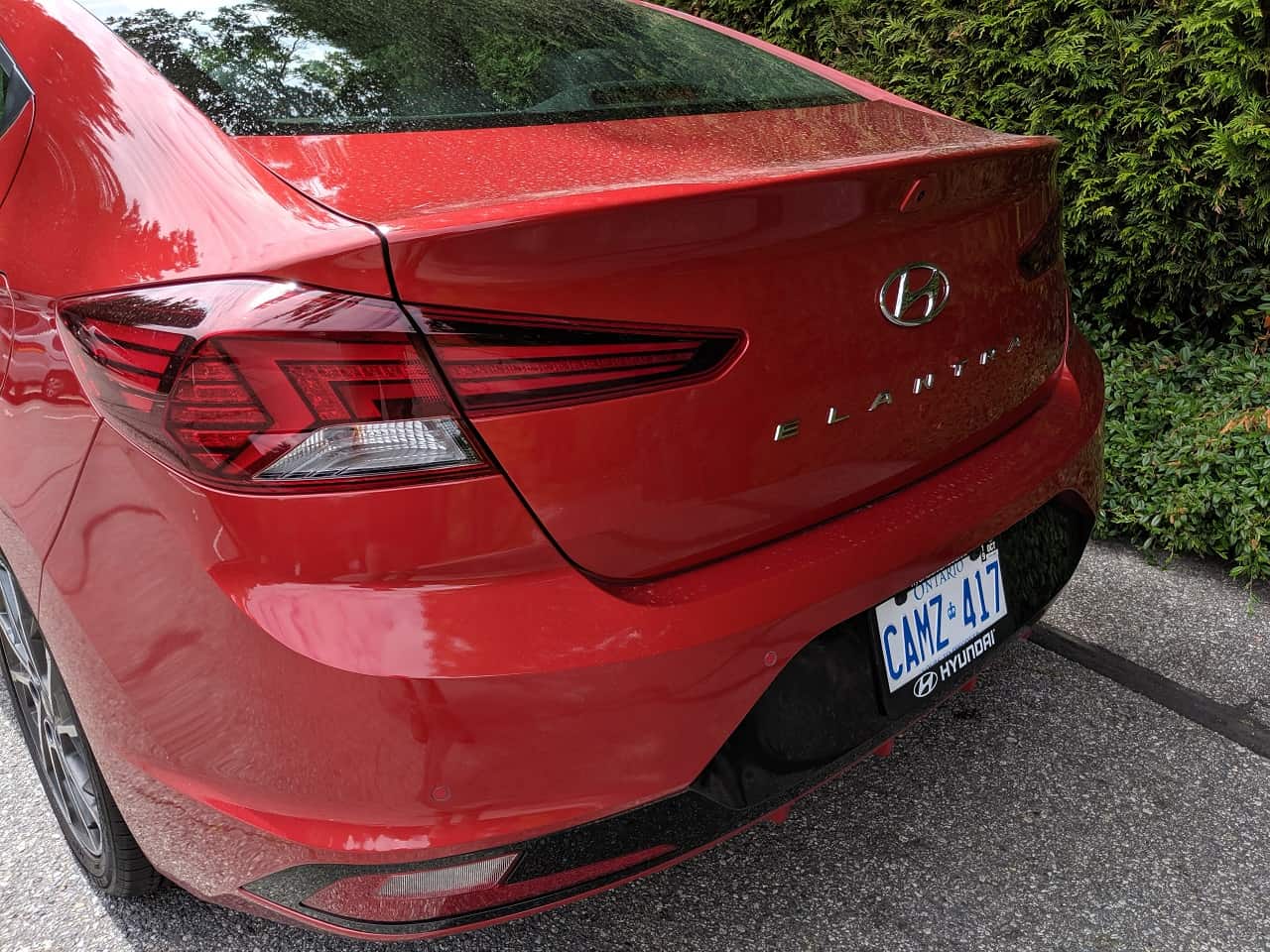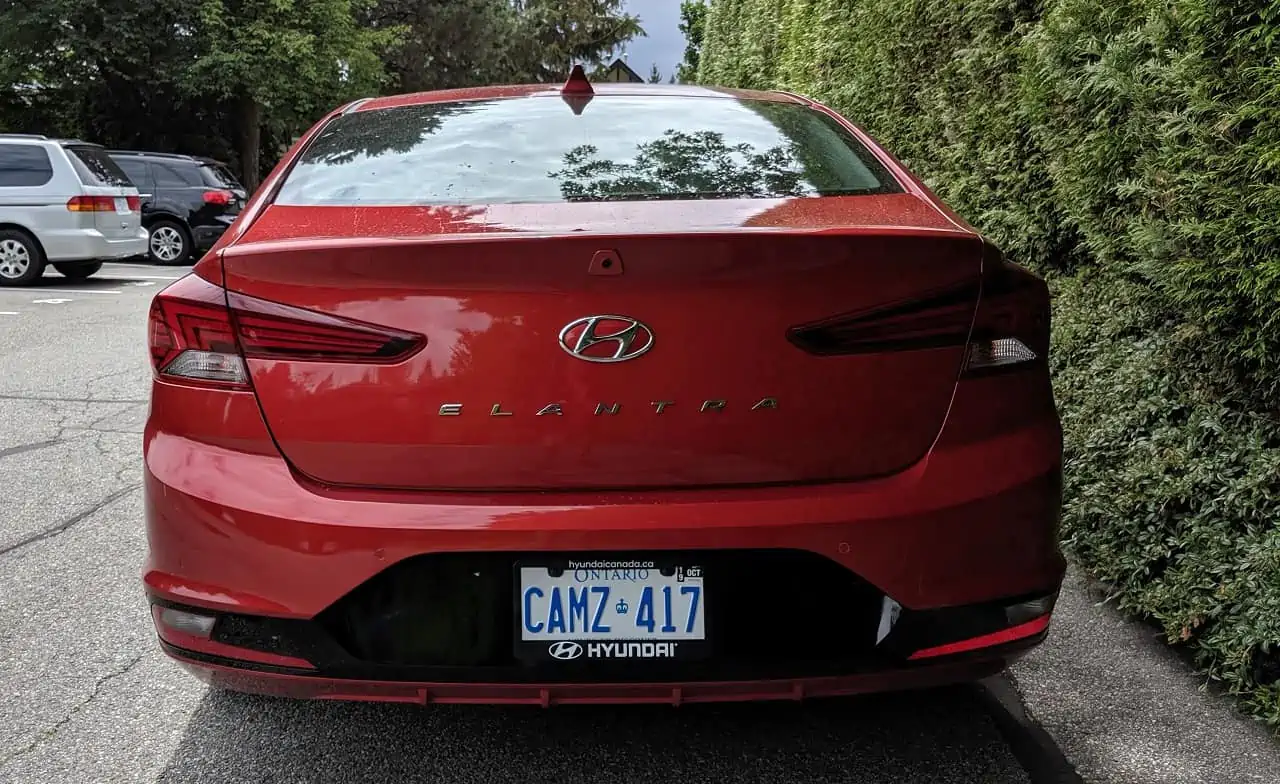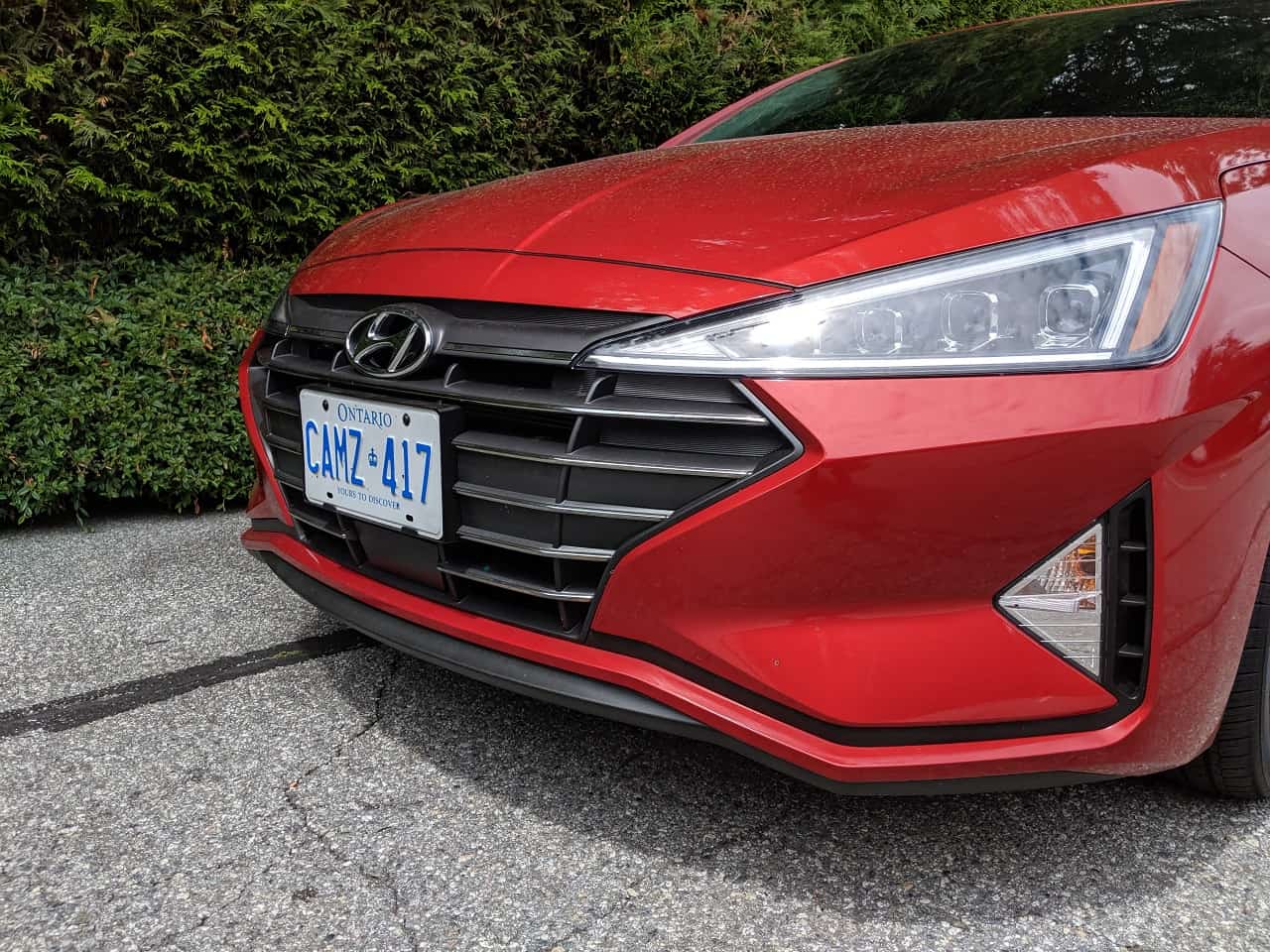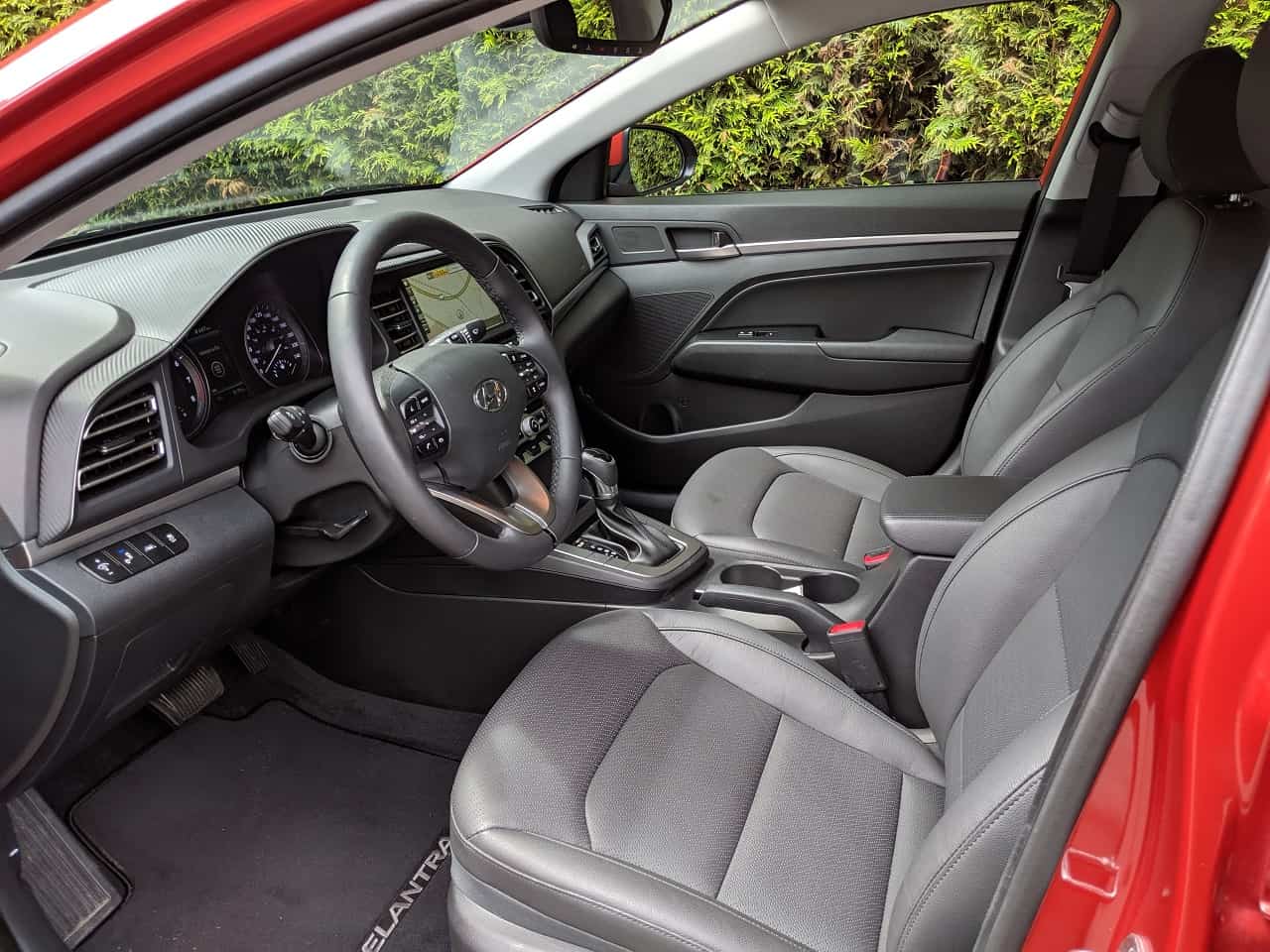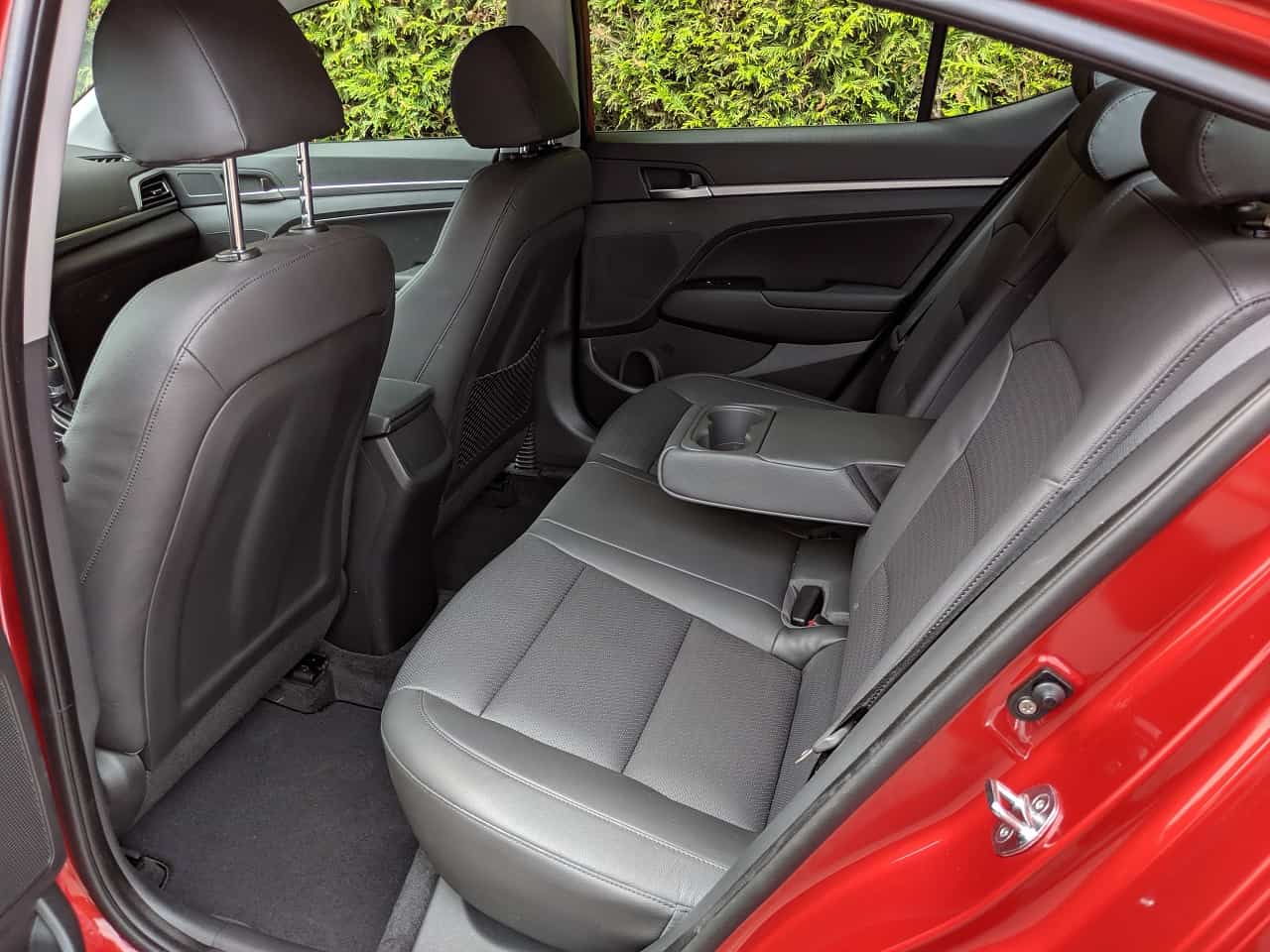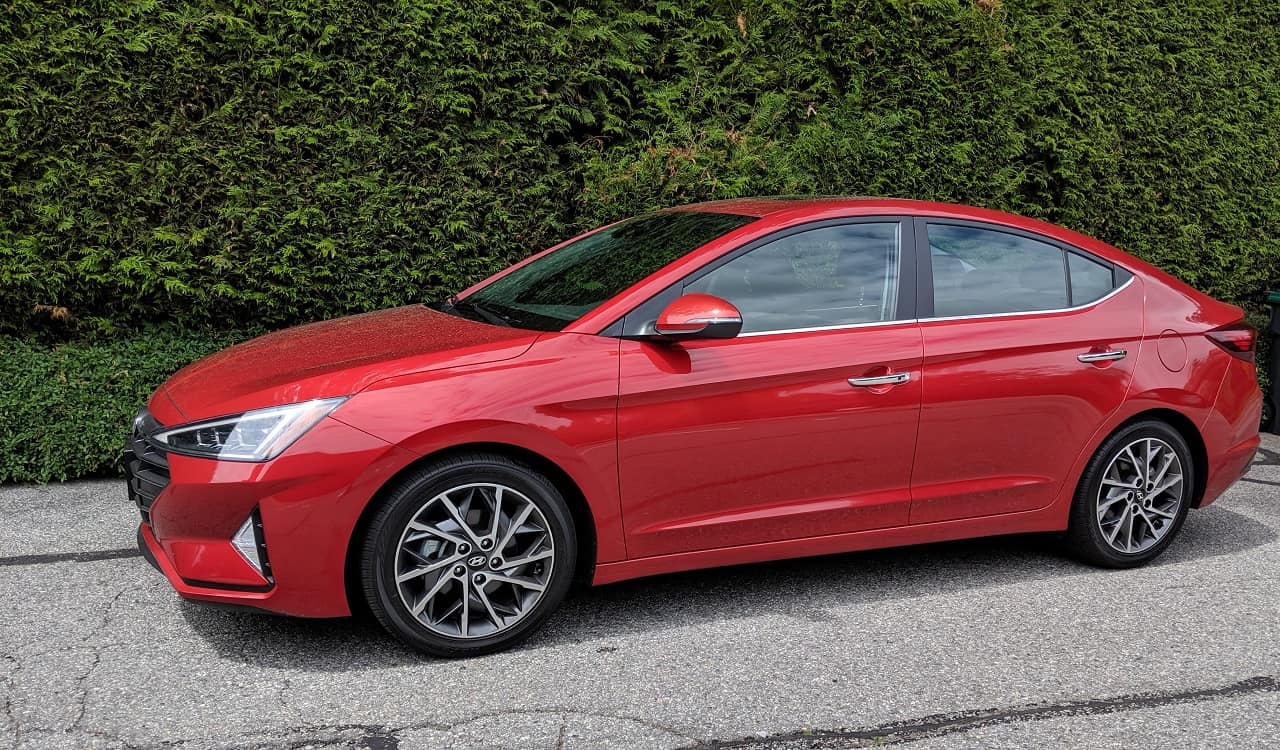Hyundai has been making great strides over the last decade or so, in terms of great design, great packaging, and good prices. Their latest design language has been pretty good looking, at least to me, I especially like the way the new Hyundai Santa Fe looks.
However, I think Hyundai missed the mark on their latest redesign/makeover of the sixth generation Elantra, which has been on sale since 2015. I have reviewed the sixth generation Hyundai Elantra on a couple of occasions, and I really liked the styling on the car, not so much on the 2019 refresh though.
This segment is very crowded with some great looking cars, especially the new Mazda3, so I’m not sure how this redesign is going to affect sales of the 2019/2020 Elantra.
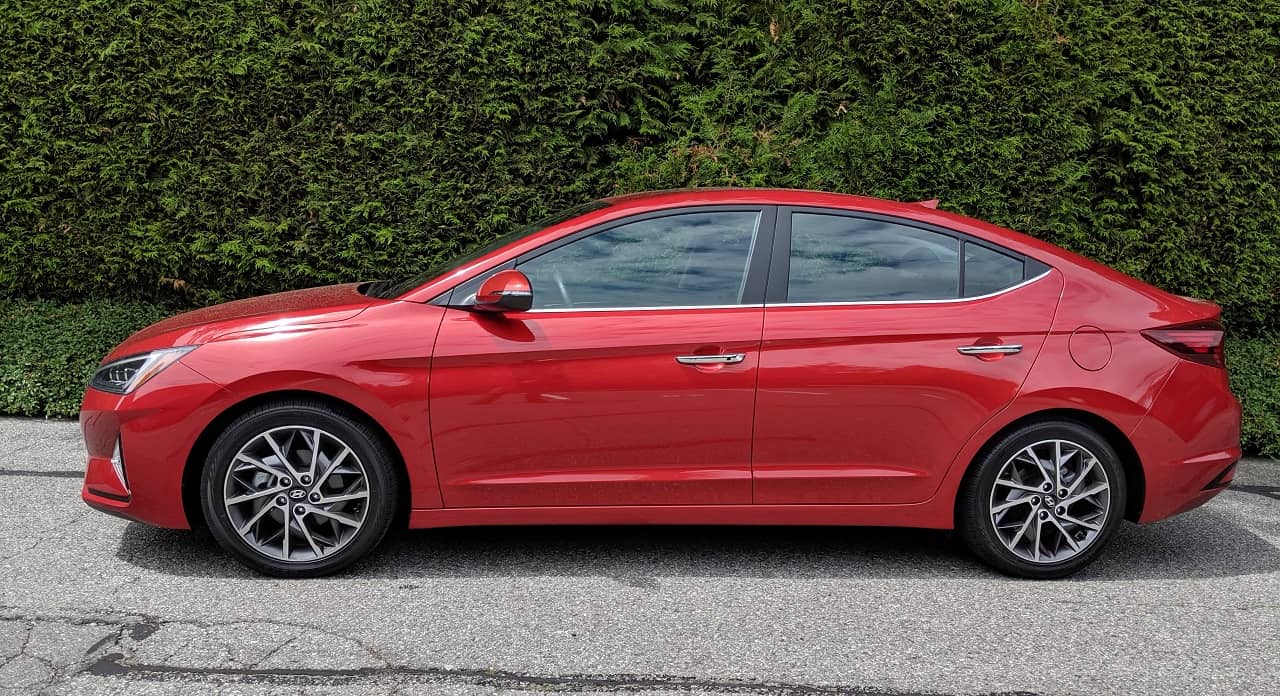
Pricing
In Canada, the 2019 Hyundai Elantra Sedan is offered in four trim levels (not including the Sport and hatchback models) , which is reduced from 6 when we last reviewed it, and has changed the names on the trims from “L”, “LE” etc. to Essential, Preferred, Luxury, and Ultimate. Below is a list of trims and starting prices:
| Trim | Transmission | Price |
| Essential | Manual | $16,999 |
| Preferred | Manual | $19,199 |
| Luxury | Automatic | $24,099 |
| Ultimate | Automatic | $27,399 |
Add $1,700 for the automatic transmission on the Essential and $1,300 on the Preferred trims. Our review car for the week was the 2019 Hyundai Elantra Ultimate, with a price tag of $29,104 including $1,705 for Delivery & Destination.
Engine/Driving
All 2019 Hyundai Elantra trims come with 2.0 liter 4-cylinder engines, producing 147 horsepower at 6,200 rpm and 132 pound-feet of torque at 4,500 rpm. Power is sent to the front wheels via a 6-speed manual (now offered on the Essential and Preferred trims, instead of just the base trim) or a 6-speed automatic transmission.
According to Natural Resources Canada’s fuel consumption ratings, 6-speed manual equipped Elantra’s should consume 9.2/6.5/8.0 Liters/100 km in city/highway/combined driving. Cars equipped with the automatic transmission should consume 8.3/6.4/7.4 L/100 km. Our week long review netted us 8.2 L/100 km in 75/25 city/highway driving, according to the on-board computer. I was also mostly driving in “Eco” mode. This fuel consumption number is about 1.0 L/100 km more than the Civic Coupe I reviewed recently, which could be contributed to the Civic’s CVT.
The 2019 Hyundai Elantra may not be the most powerful car in its segment, but it does the job well enough. There’s more than enough power for what this car will mostly be used for, which is to commute to and from work, take the kids to practices, and drive to groceries stores.
The engine produces enough power for normal city/highway driving and it does give you the option to change throttle response in the form of three driving modes: Eco, Normal, and Sport. These modes do change the way the car drives a little bit; in Eco, you’ll be saving the most fuel but you’ll get slower throttle response. In the Sport mode, the throttle response is sharper, the steering feels is heavier, and gears are held a bit longer, giving the car a sporty feel and the Elantra does become a bit fun to drive.
The ride quality on the Elantra is on the softer side, other cars such as the Focus, Mazda3, and even the new Civic have much more sportier rides. The steering feels is very numb, I couldn’t really feel what the wheels were doing, which I found to be the case with most Hyundai vehicles.
Design
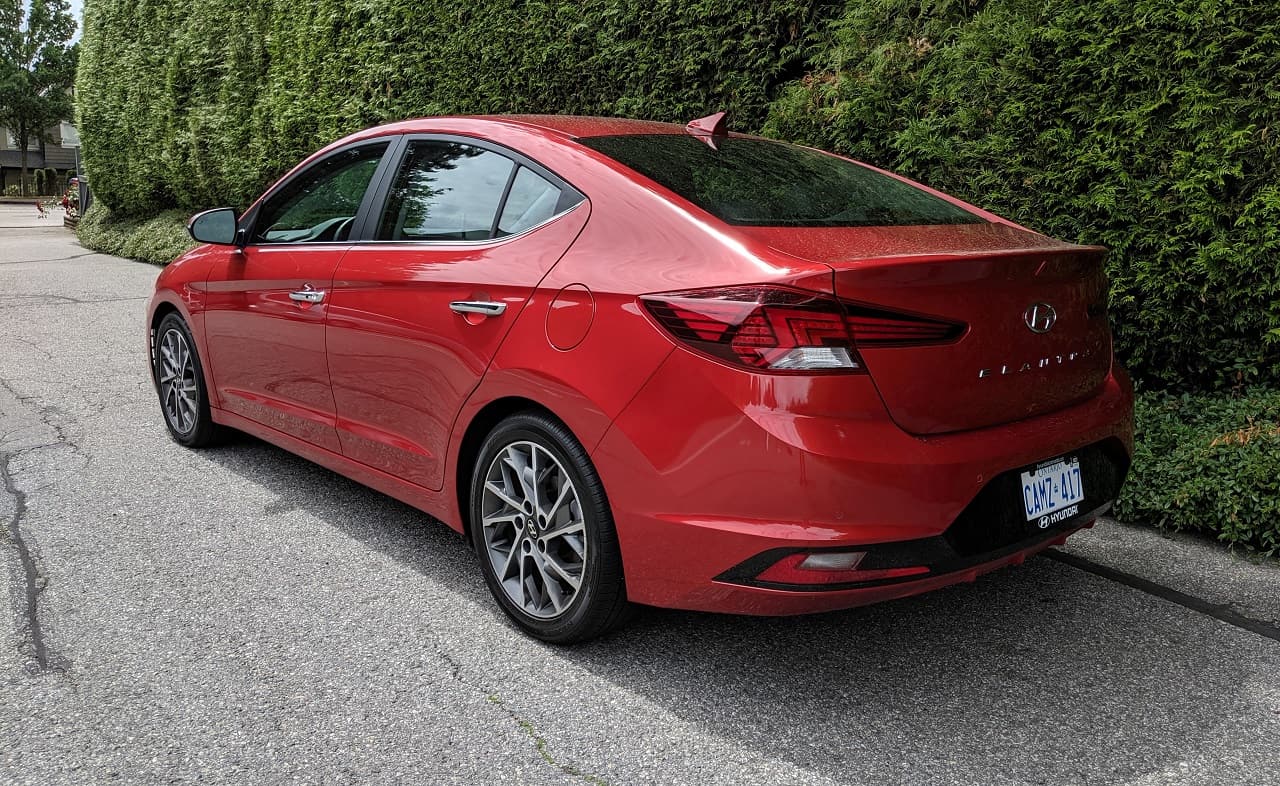
I was a big fan of the newly redesigned Elantra when it was introduced a few years ago, I thought the design was very elegant and grown up, not like the old days when compact cars got no love from their designers.
In my opinion, the 2019 Hyundai Elantra is a hot mess. This is a subjective matter and some people might like the new design of the Elantra, but from what I’ve read on the internet, those people are a very small minority.
The biggest changes happen at the front, where there are more triangles than in my algebra class in high school. There’s just too much going on at the front and too many lines intersecting each other, it just looks unnatural. I know there’s nothing natural about cars, but this design is just plain ugly (sorry Hyundai).
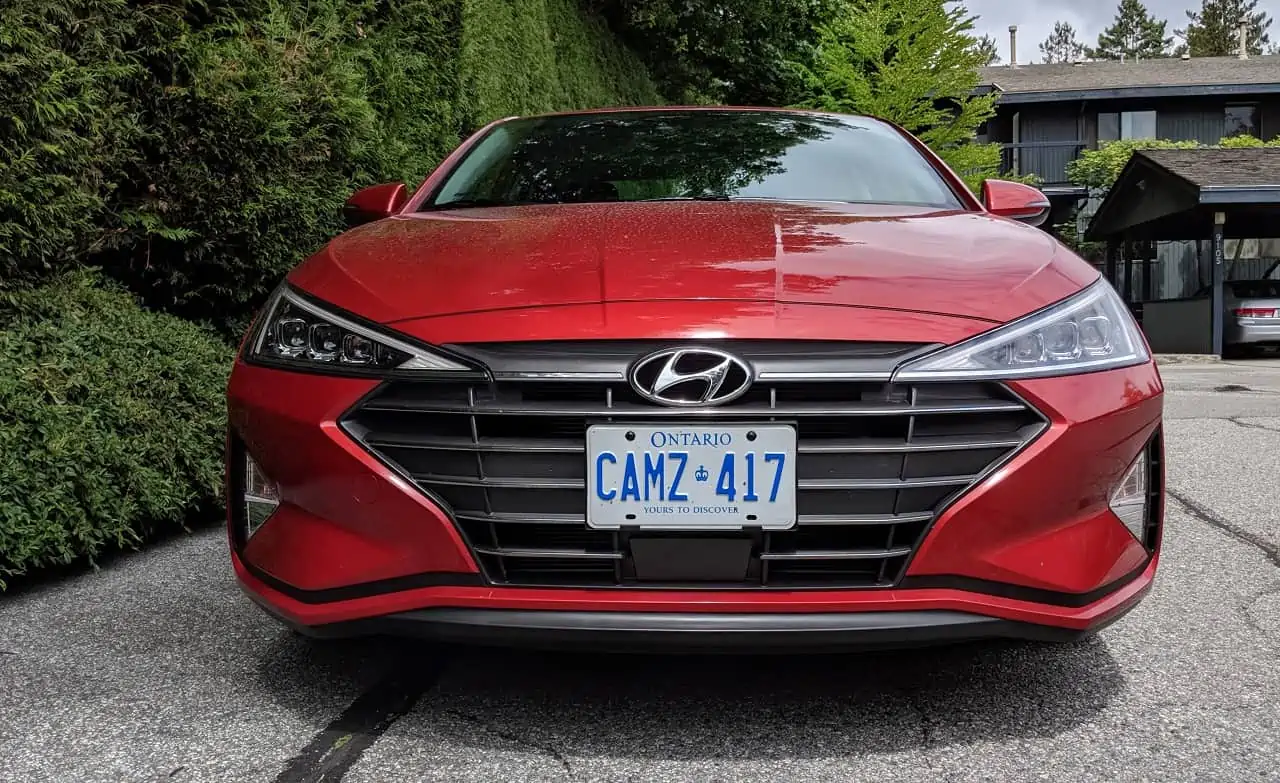
Unfortunately, to me, the refreshed 2019 Hyundai Elantra is a big failure in terms of exterior design, and I’m not the only one who thinks this way. The 2019 Elantra makes the Civic Type-R look elegant (okay, that might be an overstatement, buy you know what I mean).
Interior
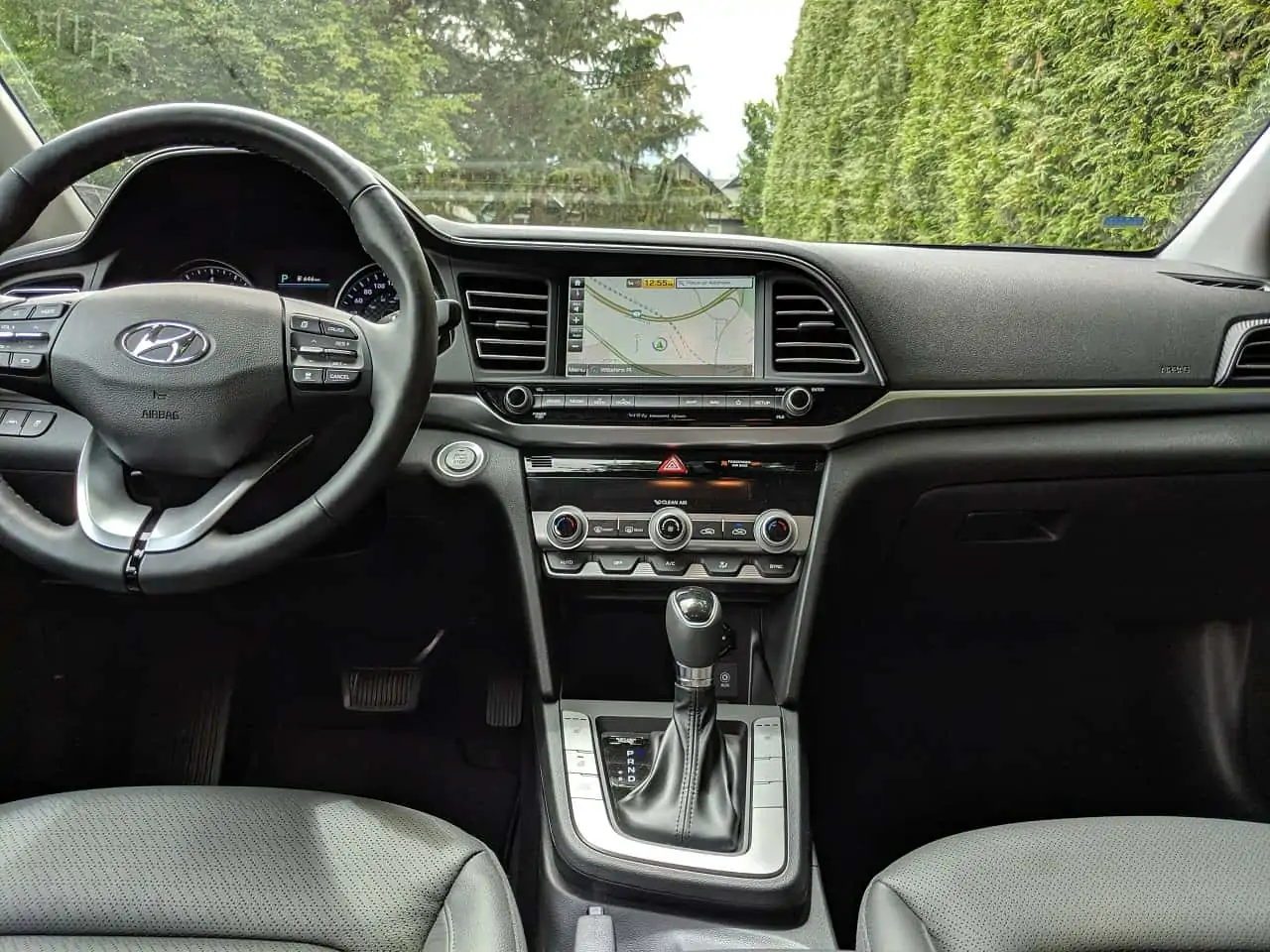
The interior on the 2019 Hyundai Elantra mostly remains the same, with minor differences in the layout and placement of the climate control buttons. The interior layout is very simple and easy to understand, with a clutter-free approach. The interior is dominated by a large touchscreen in the middle of the dashboard, the touchscreen is pretty responsive and has crisp graphics. The gauge cluster consists of a tachometer and a speedometer, which are large and easy to read, there is also a small TFT screen between the two gauges, providing information such as fuel economy, trip computer, radio channel selected etc.
Most of the surfaces on the interior are hard plastic, however, the top part of the dashboard is soft-touch plastic. I would’ve liked softer material on the outside of center stack, the vertical area where I rest my right knee when driving, it felt uncomfortable. Comparing the interior on the Elantra and the new Mazda3, you’d be quite disappointed with the Elantra’s interior, the Mazda3 has really taken things to the next level.
Although the Elantra isn’t the biggest car in its segment, there is still plenty of room for the front and rear passengers. The front seats are comfortable and the driver’s seat comes with memory seats with mirror positioning.
The rear seats are also comfortable and have heating, there was more than enough leg room for me (5′ 8”) and it should still be comfortable for taller passengers. The back seat easily fits two large adults, having a third adult is pushing it a little.
Standard/Available Features and Tech
Hyundai was one of the first manufacturers to offer some high-end features in their entry level cars, the Elantra is available with all the latest features we’ve come to expect from cars (thanks to Hyundai), below is a list of standard and available features on the 2019 Hyundai Elantra sedan:
- Proximity Key with Push-Button Start
- Hands-free Proximity Trunk
- Android Auto
- Auxiliary Input Jack
- USB Connectivity
- BlueTooth Hands-free Phone
- Satellite Radio
- Heated Seats and Steering Wheel
- Navigation
- Backup Camera with Cross Traffic Alert
- Dual-zone Automatic Climate Control
- Blind Spot Monitoring
- Adaptive HID Headlights
- Adaptive Cruise Control
- Autonomous Emergency Braking with Pedestrian Detection
- Lane Departure Warning System (LDWS) with Lane Keep Assistance
Overall Impressions
I think the 2019 Hyundai Elantra is a decent car that gets the job done, if you can get over the looks. Like all Hyundai vehicles, the Elantra comes with a lot of features normally found in much more expensive cars, at a reasonable starting price.
